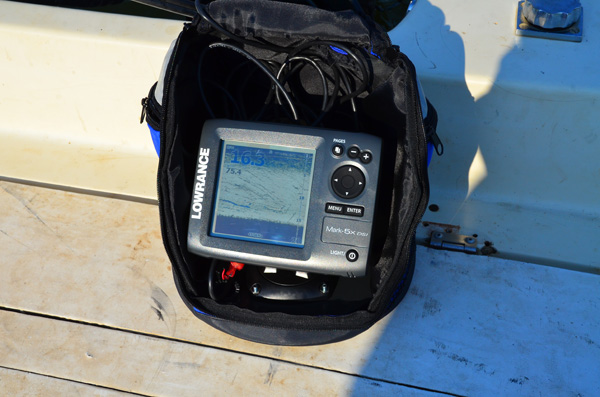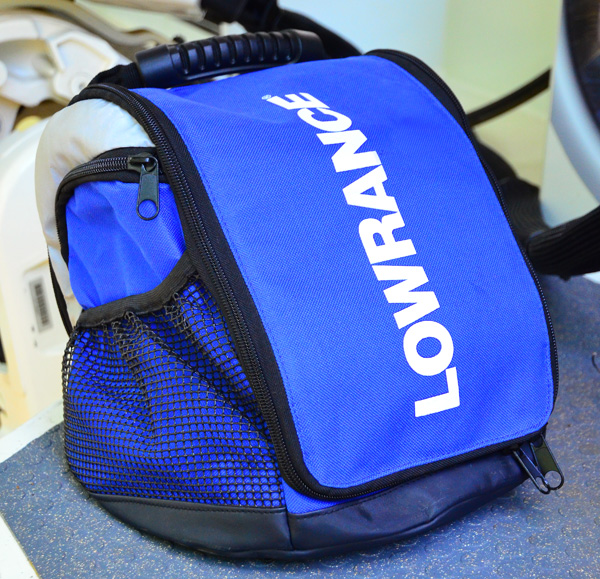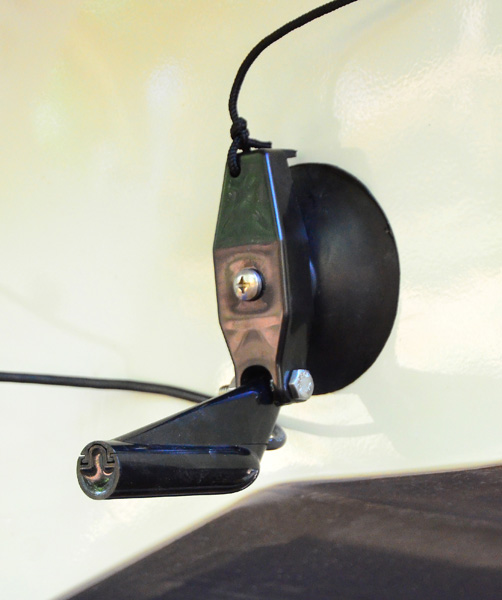PRODUCT AWARENESS: Lowrance Portable Power Pack
- NAFA
- Feb 1, 2015
- 4 min read
By Alex Julius
The Lowrance Portable Power Pack is a worthy accompaniment for the angler travelling to fish exotic locations.
Portable depth sounders are not a new thing; in fact, they’ve been around for more than 30 years. In that era, a portable fish finder was a nice bit of kit because most of us were fishing from aluminium car-toppers and we had to lug all the gear separately in our 4WDs. We’re talking about a rough-as-guts 3.6m tinny which was all about keeping light so you could throw it up on the roof of the Tojo. The standard 15hp outboard was pull-start, so there was no big battery aboard. There were three full- boat-width bench seats as part of the boat’s structure, and I suppose you could have fitted a sounder bracket somewhere internally so that it didn’t get smashed when being dragged from the roof racks. But the tinny would often need to be dragged over mud and structure – not ideal for a fixed transducer.
Yes, back then a portable fish finder was the ant’s pants because it was added to and taken away from the boat as needed, including a suction cap transducer and internal battery power, and it helped you find fish from little boats that went back and forth on top of dusty fourbies.
The transition from car toppers to trailer boats for barra fishing up north, and other estuary species down south, meant that the portable fish finder went out the door. Electric- start motors, internal battery set-ups and bush- tough trailers meant the world was your oyster as far as fitting the latest electronic fish-finding equipment to your barra boat went.
Although the portable fish finder has for a long time not been an essential item to take fishing with you because your trailer boat is already fitted with the latest sounder/ GPS combo, most likely equipped with Structurescan, there is one area where the portable fish finder is increasingly coming into its own: for the angler travelling to fish exotic third-world locations.
Now, I speak from serious experience here. Readers of this magazine would know I travelled to Africa in 2013, leading a small group mainly to go tigerfishing.
That took place at two remote safari lodges which specialise in tigerfishing. It was a good trip which I learnt a lot from. The boats were fine: 5-6m centre- console jobs with forward casting platforms. The guides varied, depending mainly on how good their English was; the ones who were the most fluent in English seemed to produce more fish mainly because they could get their message across and likewise understood the feedback they were getting from their clients. However, they all had one thing in common: none of them had even the slightest clue as to what was in the water under their boats, or the precise depth. Of course, that’s because the boats either weren’t fitted with sounders or, on the couple that had them, they didn’t work and looked like they’d given up the ghost long before. To say it was frustrating for someone like myself, who spends so much of his time on the water with eyes glued to his HDS12 Lowrance, is an understatement of gargantuan proportions.
However, they all had one thing in common: none of them had even the slightest clue as to what was in the water under their boats, or the precise depth.
In 2014, it was back to Africa, leading another group of keen anglers chasing tigers, this time to an even-more-remote destination: Mozambique. Well one thing I vowed before returning to Africa was to source a portable fish finder, and I am so glad I did.
Initially, I contacted Lowrance Australia which sent me two of its Lowrance Portable Power Pack units to test. One was equipped with the Lowrance X-4 colour fish finder and the other with the Lowrance Mark-5x DSI black-and-white sounder. This gave me serious cause to consider taking two portables to spread amongst the group; but in the end I took just the Mark-5x DSI because it has a bigger screen. The Lowrance Portable Power Pack comes with a base plate, a PPP mounting bracket, a D-Cell battery adaptor for 8 batteries, a skimmer transducer, a suction cup mount, assembly nuts and bolts and a carry bag. You mount whichever unit you choose to the bracket inside the bag. It took about 15 minutes to assemble the Power Pack, and what you notice immediately is how much spare room there is inside it. I carried the power pack as hand luggage through 10 airports all up and managed to stow 3 baitcasters and a 4000-sized threadline reel inside the bag behind the Mark-5x. You can imagine the quizzical looks and scrutiny it received from airport staff.
IN THE FIELD As expected, there were no “working” fish finders on the boats we fished from; the little Lowrance Power Pack was a Godsend. I found the transducer suction cap held on to the transom of each boat I fitted it to, not once coming adrift. Admittedly, I positioned it so the bottom of the transducer was level with the bottom of the boat so there wasn’t much water pressure on it. As long as it worked at trolling speeds and at rest, I was happy... and it did that faultlessly.
The unit itself gave me all the information I needed – clearly. It showed fish and structure no worries and, importantly for tigerfishing, it gave me the depth which governed lure selection and retrieve technique, or if we should even be fishing at a particular spot. Mind you, the Mark-5x is a pretty sophisticated unit, and has all those features that you expect of a modern Lowrance fish finder.
I took 8 spare D-cell batteries on the trip, but I needn’t have bothered; the original 8 lasted for 7 straight fishing days which I was very impressed with – big D-cells are heavy and you don’t want to be carrying them around the world if you don’t need to.
All up, I was rapt with both my decision to take a portable Fish Finder and with the convenience and functionality of the Lowrance Portable Power Pack/Mark-5x DSI on the mighty Zambezi River.










